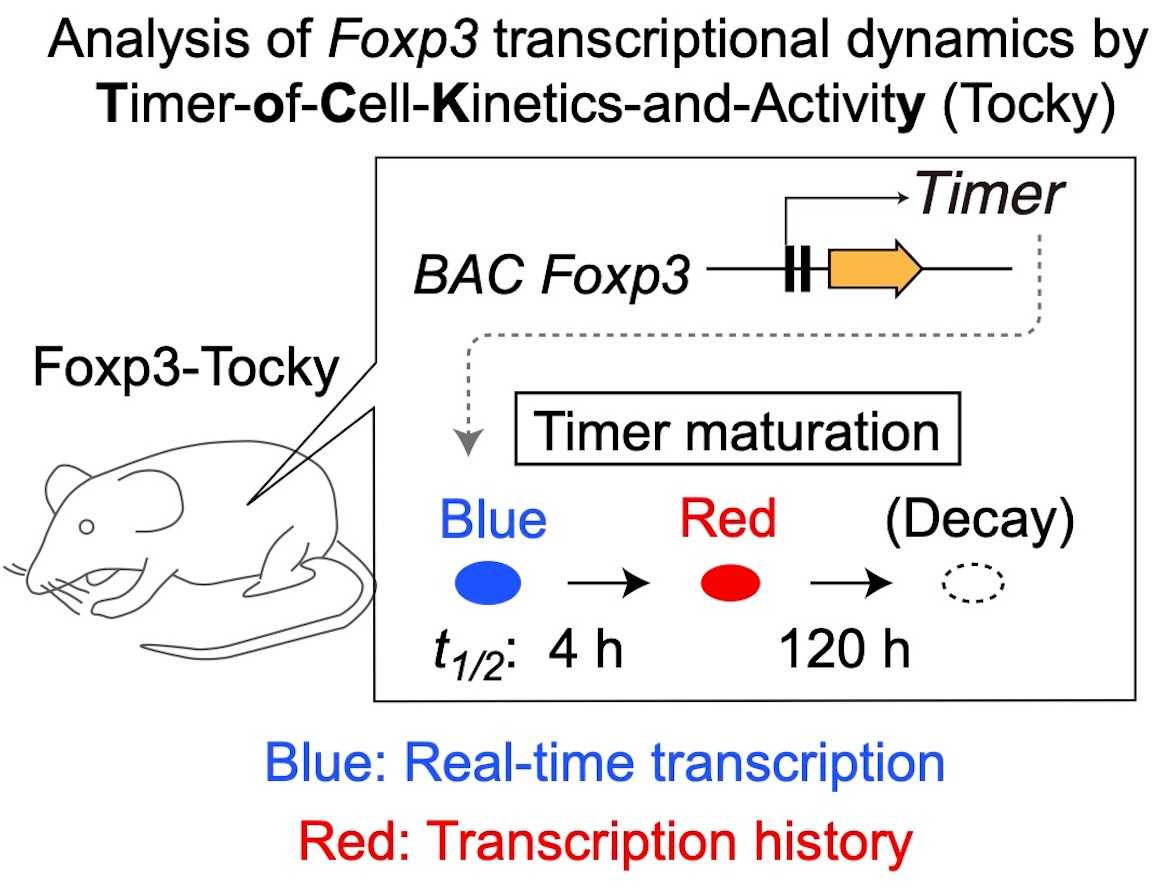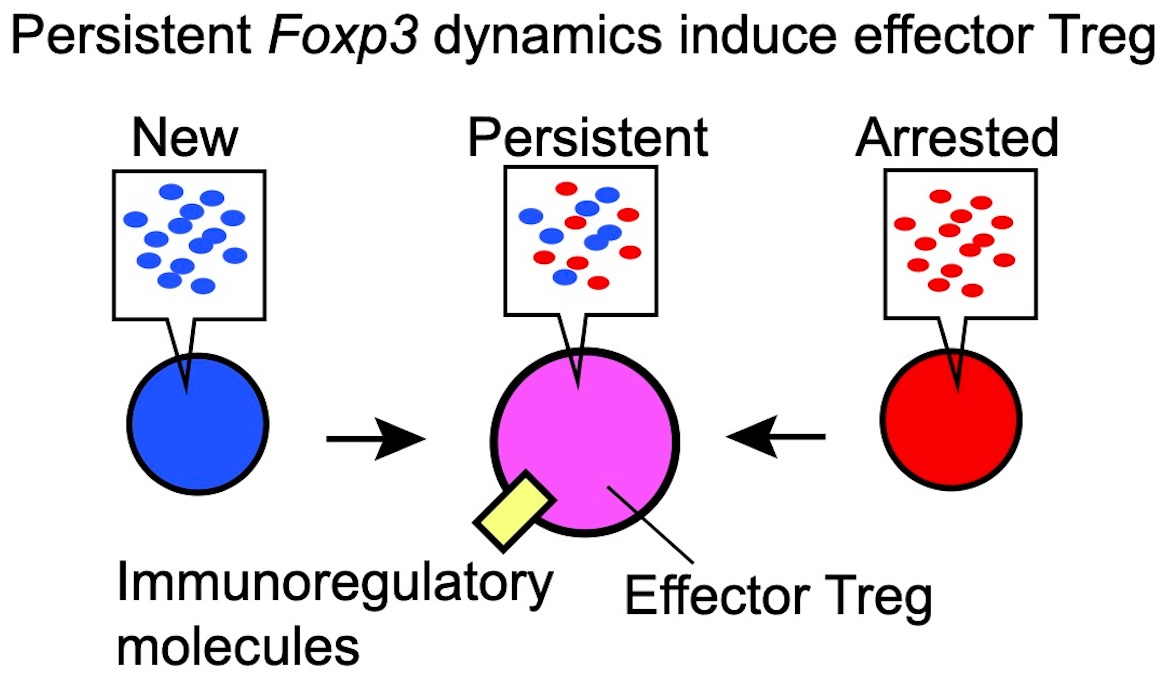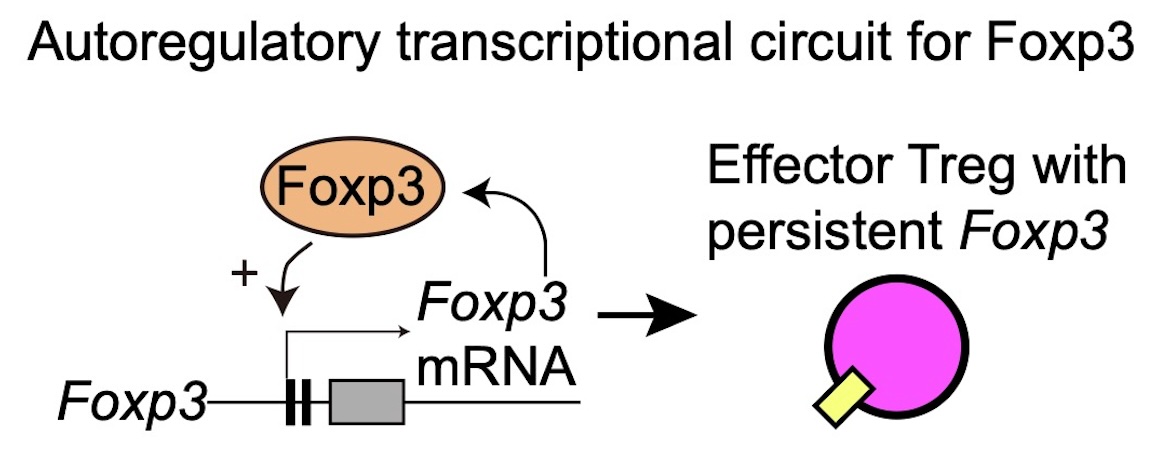Decoding Foxp3 – From Treg Dogma to T-cell Dynamics
The second Tocky publication from the Ono Lab

Foxp3 - a Lineage Factor or a Marker for Regulatory Function?
It is widely considered that Foxp3-expressing regulatory T cells (Treg) are a separate type of T-cells specialised for suppressing immune cell activities. Okay, this may be true if all Treg are functioning as suppressor T cells. However, in reality, it is difficult to identify which Treg cells are functioning and which ones are not. Further, the majority of Foxp3-expressing T-cells are not functional Treg and can contribute to the induction of T-cell response in humans (Fujii et al., 2016; Miyara et al., 2009; Fujii et al., 2011).
Importantly, the belief that Tregs constitute a unique lineage of cells originates from, and is supported by, the findings of Asano et al. Should this evidence no longer be valid (Ono & Tanaka, 2016), how can we then investigate Foxp3 and Treg?
Our second Tocky publication (Bending et al., 2018) aimed to answer this question by demonstrating the power of Foxp3-Tocky – the Tocky mouse strain for monitoring temporal dynamics of Foxp3 transcription (Fujii et al., 2016; Bending et al., 2018). Our results support that Foxp3 acts as a switch for the suppressive mechanism that is dynamically induced during homeostasis and upon stimulation.
Experimental Validation of Foxp3-Tocky
First, to better understand Foxp3 transcription dynamics, we experimentally determined the half-life of Fluorescent Timer protein. Using degradation assays, the half-life of blue fluorescence and red fluorescence was 4 h and 120 h, respectively. These are improved measurements, as previous reports relied on estimation through modelling.

Immunological Significance of Foxp3 Transcirptional Dynamics Revealed by Tocky
New Foxp3 Transcription
By analysing homeostasis and inflammation, we showed that Foxp3 expression is newly induced in a small yet significant percentage of CD4+ T-cells and that this is increased during self-containing inflammation. These results support more dynamic regulation of Foxp3 than previously imagined.

Persistent Foxp3 Transcription
Intriguingly, we found that temporally sustained Foxp3 transcription (Persistent transcription) is a hallmark of activated Treg with enhanced immunoregulatory phenotype (effector Treg).

Autoregulatory Transcriptional Loop for Foxp3 Revealed by Tocky
The utilization of a triple transgenic system, combining Foxp3-Tocky, Foxp3-EGFP knock-in, and Foxp3 scurfy hypomorphic mutant loci, allowed for an unprecedented analysis of Foxp3 transcriptional regulation in the presence and absence of functional Foxp3 protein. This approach unveiled a significant finding: the Foxp3 protein itself amplifies the transcription of the Foxp3 gene, indicating an autoregulatory loop that enhances the regulatory functions of Foxp3.

Immunotherapy Application of Tocky
Understanding of temporally dynamic features of Foxp3 expressors enabled a new immunotherapy targeting Foxp3 dynamics. We demonstrated this using anti-OX40 antibody, which accelerated apoptosis of Foxp3 Persistent expressors.

References
2018
- A temporally dynamic Foxp3 autoregulatory transcriptional circuit controls the effector Treg programmeThe EMBO journal, May 2018The second Tocky paper from the Ono lab uncovers the temporally dynamic regulation of Foxp3 transcription, offering new insights into T cell regulation.
- A timer for analyzing temporally dynamic changes in transcription during differentiation in vivoJournal of Cell Biology, May 2018The foundational publication introducing Tocky technology by the Ono lab, marking a breakthrough in T cell and B cell studies.
2016
- Regulatory T cells in melanoma revisited by a computational clustering of FOXP3+ T cell subpopulationsThe Journal of Immunology, May 2016The pioneering study ntroduces a data-driven methodology to explore Treg subpopulations, employing Principal Component Analysis (PCA) for the first time.
- Controversies concerning thymus‐derived regulatory T cells: fundamental issues and a new perspectiveImmunology and cell biology, May 2016A landmark opinion piece challenging the reproducibility of a foundational Treg experiment, while introducing a groundbreaking dynamic view on Foxp3-mediated T cell regulation.
2011
- Perturbations of both nonregulatory and regulatory FOXP3+ T cells in patients with malignant melanomaBritish Journal of Dermatology, May 2011
2009
- Functional Delineation and Differentiation Dynamics of Human CD4+ T Cells Expressing the FoxP3 Transcription FactorImmunity, May 2009